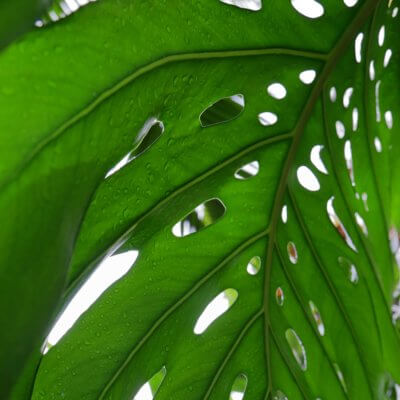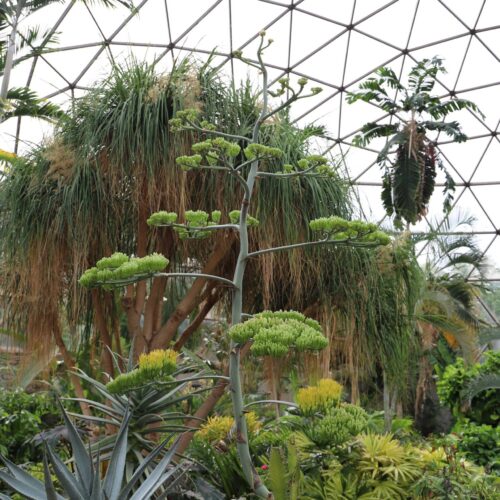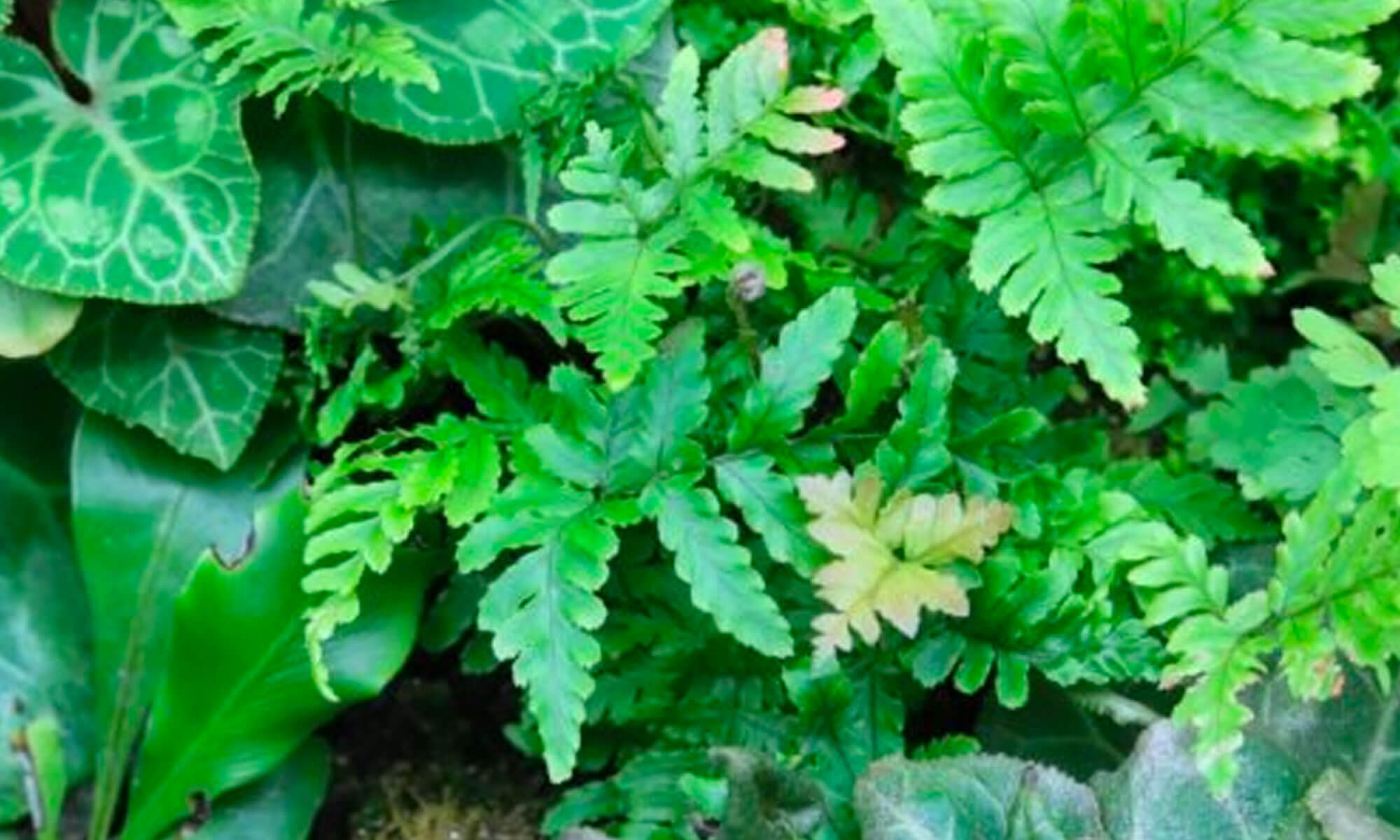Aroids: The Millennial Gateway to Gardening
You’ll find their distinctive leaves and notorious flower stalks on everything these days from curtains to wallpaper. Aroids, such as philodendrons and arums, all members of the family Araceae, have skyrocketed in popularity due to their dramatic appearances and pop cultural cachet. For Millennials, they may even be a gateway to gardening.
The Botanical Garden collection features 2,905 taxa, including these six staff and visitor favorites:
1. Amorphophallus titanum (Titan arum)

With an inflorescence topping out at just under 10 feet and a single leaf looking like a small tree in the tropical understory of its native Sumatra, the Amorphophallus titanum (Titan arum) was aptly named after the Greek Titans of mythology. Our own Titan arum—affectionately known as “Carrie”—was the first known to bloom in Iowa. Read about Carrie’s bloom here.
2. Alocasia lauterbachiana (baroque sword elephant’s ear)

The diverse genus Alocasia is native from Southeast Asia all the way to Northern Australia and contains nearly 80 species. Alocasia lauterbachiana, or baroque sword, has beautifully wavy, dark green leaves with coppery undersides and attains a height of nearly six feet when fully grown.
3. Scindapsus pictus (satin pothos)

A charismatic climber, this pothos vine can be seen discreetly growing up and along the walls of the Gardeners Showhouse. Embellished by vibrant silver mottling, the rounded, heart-shaped leaves hug the cement tightly, uniquely characteristic of a so-called shingle plant. In nature, these leaves grow flat against vertical surfaces of trees using aerial roots as anchors to climb upward.
4. Monstera deliciosa (Swiss cheese plant)

Swiss cheese plant is a climbing evergreen perennial vine, native to Central America and Southern Mexico. The root of “delicious” in the specific epithet refers to the edible corn-cob shaped fruits which are rumored to taste like a combo of pineapple-mango and banana. The rest of the plant is poisonous. The gorgeous green perforated foliage, resembling a slice of Swiss cheese, is lovely when given room to grow and scramble. Unsurprisingly, it’s a popular houseplant.
5. Alocasia ‘Okinawa Silver’

With head-turning variegation, the leaves and stems feature mottled shades of green with patches of white. This plant is a stunning surprise in the garden, and the white variegation seems to be able to take more sun without scorching than we might expect.
6. Alocasia ‘Morocco’ (Morocco elephant’s ear)

Some of the greatest tropical treasures are found within the understory. Don’t let the shorter stature of this colorful elephant’s ear cultivar compromise the abundance of delight supplied within its tight clumping habit. Silver veins juxtaposed with glossy, dark-green foliage define this beauty. Influential style is supported by magenta stems, and the plum-colored underside of the foliage has even more to offer.







